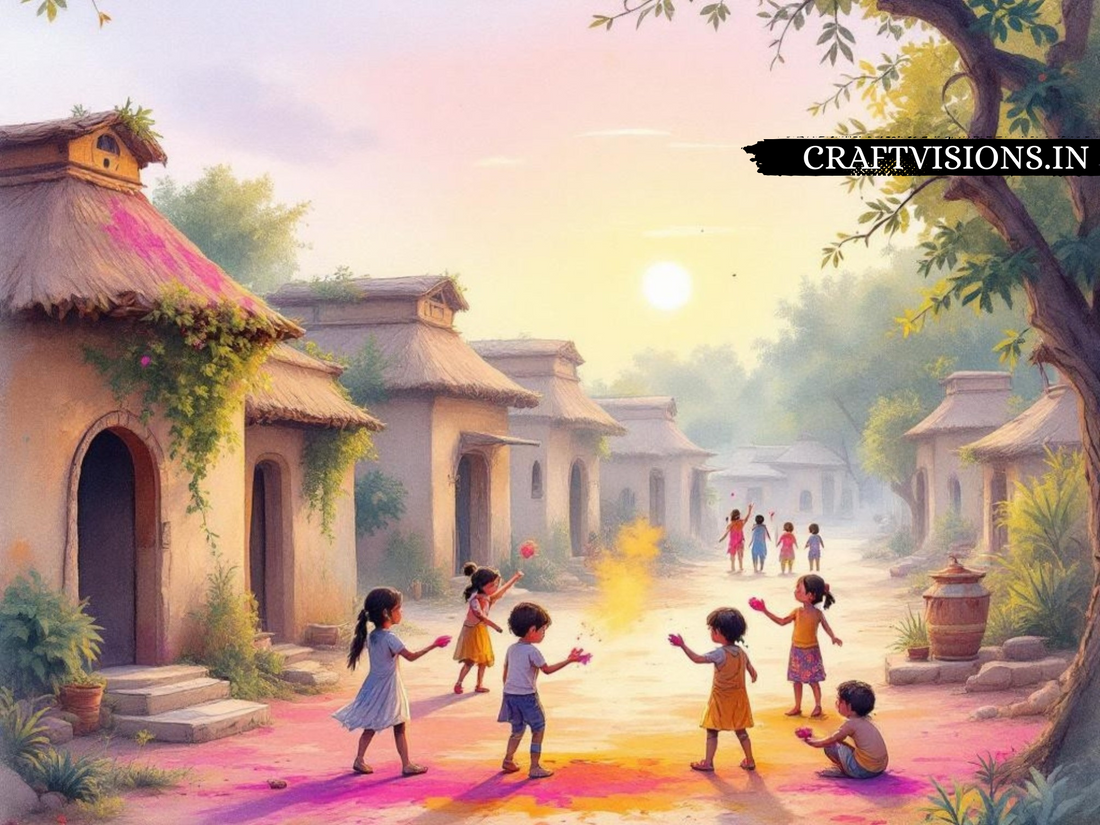
The Mythological Roots of Holi
Share
Holi is one of the most vibrant and joy-filled festivals in India, known as the Festival of Colors. But behind the playful throwing of gulal lies deep mythological roots, spiritual symbolism, and meaningful rituals that mark this beautiful celebration of divine love and the triumph of good over evil.
Let’s explore why Holi holds such a revered place in Hindu tradition and how it continues to insspire generations with its powerful message.
🎨 The Mythological Roots of Holi
1️⃣ The Legend of Prahlad & Holika
The most widely accepted story behind Holi is that of Prahlad, a devout follower of Lord Vishnu, and his demon father, Hiranyakashipu. Angered by Prahlad’s devotion, the king plotted to kill him with the help of his sister, Holika, who had a magical cloak that made her imune to fire.

Holika tricked Prahlad into sitting on a pyre with her, but the divine protected him — Holika burned while Prahlad remained unharmed. This story symbolizes the victory of good over evil and is comemorated through the ritual of Holika Dahan.
2️⃣ Radha-Krishna & The Festival of Love
Holi is also deeply connected to the divine love of Radha and Lord Krishna. As a child, Krishna was worried about his dark complexion and whether fair-skinned Radha would love him. His mother suggested he smear color on Radha’s face — a playful act that became a tradition and a symbol of eternal love.

🔥 Rituals and Traditions of Holi
-
Holika Dahan (The Bonfire):
Held on the eve of Holi, it signifies the burning away of negativity, ego, and evil energies. -
Rangwali Holi (Playing with Colors):
People smear each other with natural colors, sing, dance, and celebrate unity and joy. -
Spiritual Cleansing:
Holi is considered a time to forgive, renew relationships, and start fresh with clean hearts and intentions.
🏠 Add Divine Energy to Your Holi Festivities with CraftVisions
Celebrate this Holi with divine blessings by adorning your home with sacred idols like Radha Krishna, Lord Vishnu, and Hanuman Ji. Our handcrafted collection aligns with the spiritual esence of the festival — bringing purity, harmony, and grace to your celebrations.
🌸 Whether you seek Rangoli-friendly idols, Pooja room murtis, or gifting items for loved ones, explore the curated spiritual collections at CraftVisions to elevate your festive spirit.
🔚 Conclusion
Holi is not just about colors and celebration — it’s a reminder of divine love, faith, and the ultimate triumph of good over evil. As you play with colors and gather around the Holika fire, remember the deeper spiritual meaning and allow your heart to be filled with compassion, joy, and devotion. Celebrate consciously, spiritually, and joyfuly this Holi.
❓ FAQ Section
Q1: When is Holi celebrated?
Holi is usually celebrated in March, on the full moon day of Phalguna month, according to the Hindu calendar.
Q2: What does Holika Dahan signify?
It signifies the burning of ego, evil, and negativity — inspired by the legend of Holika and Prahlad.
Q3: How can I celebrate Holi spiritually at home?
Set up a sacred space with idols of Radha Krishna or Vishnu, offer prayers, light incense, and meditate before playing with colors.
Q4: What colors are traditionally used in Holi?
Natural colors like turmeric (yellow), sandalwood (brown), rose (pink), and neem (green) are considered auspicious and safe.